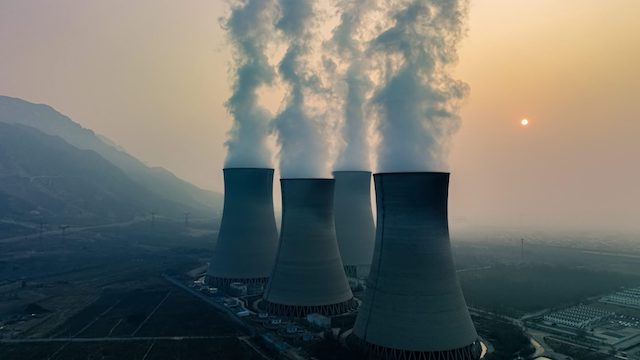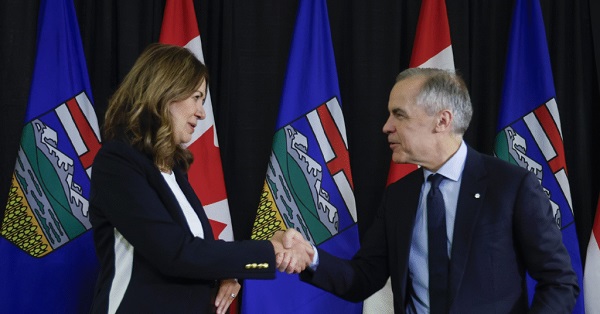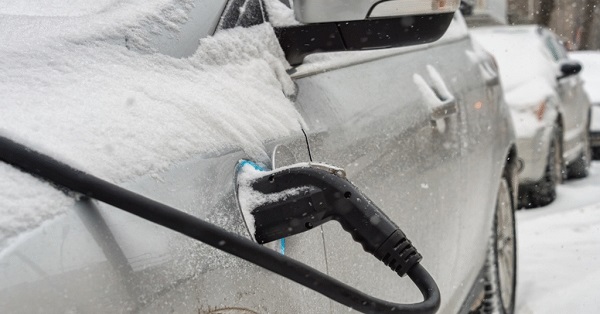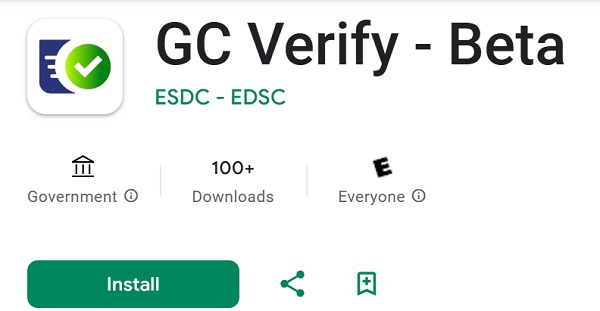Canadian Energy Centre
Canada should ‘shout from the rooftops’ its ability to reduce emissions with LNG

Morning view of a coal-fired power station in China. Getty Images photo
From the Canadian Energy Centre Ltd.
By James Snell and Deborah Jaremko
Canada should work with its allies and potential customers to receive credit for the global emissions reduction benefits of exporting liquefied natural gas (LNG), says a prominent Canadian energy advocate.
The equivalent of all Canadian GHG emissions could be eliminated by helping Asia switch 20 per cent of its coal fired power stations to natural gas, says Shannon Joseph, chair of Energy for a Secure Future, citing a recent report published by the Canadian Chamber of Commerce.
“Canada could help deliver 680 megatonnes of emissions reductions, and that’s more than our whole country,” she says.
“We should do it and shout it from the rooftops. We should move forward with LNG as an energy and emission solution.”
Receiving credit for lowering emissions with LNG could come through what’s known as Article 6 of the Paris Agreement, but Joseph says Canada need not wait for these carbon accounting rules to be settled before pressing forward.
“We need to assert, confidently, the environmental value we would be delivering to the world,” she says.

Shannon Joseph, chair of Energy for a Secure Future. Photo by Dave Chidley for the Canadian Energy Centre
Article 6 conceptually allows countries to collaborate with each other on emissions reduction goals by trading carbon credits. In theory, for example that could allow Canada receive credit for emissions reductions achieved in China by using Canadian LNG to displace coal.
The Paris Agreement signatories have not yet agreed on the rules to make Article 6 a reality. Meanwhile, driven by Asia, last year the world consumed more coal – and produced more emissions from that coal – than ever before, according to the International Energy Agency (IEA).
The IEA says switching from coal to natural gas for electricity generation reduces emissions by half on average. LNG from Canada can deliver an even bigger decrease, reducing emissions by up to 62 per cent, according to a June 2020 study published in the Journal for Cleaner Production.
Even before Russia’s invasion of Ukraine, world LNG demand was expected to nearly double by 2040. The market has become even tighter as countries work to exclude Russian energy, says a report by Energy for a Secure Future.
Japan and South Korea, as well as Germany have asked Canada to step up LNG development to help mitigate the energy crisis.
With or without Article 6, Energy for a Secure Future is calling on Canada to work with its potential customers in Europe and Asia to recognize and credit the environmental benefits of Canadian LNG displacing higher emitting energy.
“Canada’s allies have come here asking for energy, and we should work directly with them to find a way to have our environmental contributions recognized,” says Joseph, adding the U.S. has moved ahead without credits, more than doubling LNG exports since 2019.
Canada has yet to export significant volumes of LNG after years of regulatory delay and cancelled projects – but things are changing.
LNG Canada in Kitimat B.C. will be the first major export facility to operate, starting in 2025. Woodfibre LNG near Squamish begins construction this fall with the aim to start operating in 2027. Other proposed projects include the Indigenous-led Cedar LNG facility in Kitimat and Ksi Lisims LNG near Prince Rupert.

LNG Canada CEO Jason Klein stands atop a receiving platform overlooking LNG processing units called trains that are used to convert natural gas into liquefied natural gas at the LNG Canada export terminal under construction, in Kitimat, B.C., on Wednesday, September 28, 2022. CP Images photo
Meanwhile, India, China and Japan remain consumers of Russian oil and gas, according to the 2023 Statistical Review of World Energy.
“We are trying to help our allies meet the challenges they are facing. One of these is ensuring that their populations – sometimes of over a billion people – can even access modern forms of energy,” Joseph says.
“If Canada wants to be relevant and to lead, we have to come to the table with solutions to this question, alongside the environmental one. LNG is our biggest card.”
India will have the world’s largest population by 2028 – climbing to 1.45 billion and rising to 1.67 billion people by 2040, according to the United Nations Population Fund.
“Currently India is the fourth largest importer of LNG [in the world] and demand is expected to grow massively as 270 million people move up the socioeconomic ladder,” says Victor Thomas, CEO of the Canada-India Business Council.
Canada’s potential to deliver LNG to India “just makes good sense when you look at the geopolitical fractures that have occurred since 2022,” he says, noting the U.S. has recognized the opportunity and is taking action to form new business relationships in India.
Burning wood and other biomass for heat and cooking is still common in the South Asian country, while coal produces around three quarters of India’s electricity. According to the IEA, by 2040 India’s total energy demand will be 70 per cent higher than it was in 2019.
“Transitioning from wood burning to LNG is a massive emissions reduction,” says Thomas. “It’s a safe and reliable opportunity. People are looking for a country like Canada to be able to provide that.”
Alberta
Alberta’s huge oil sands reserves dwarf U.S. shale

From the Canadian Energy Centre
By Will Gibson
Oil sands could maintain current production rates for more than 140 years
Investor interest in Canadian oil producers, primarily in the Alberta oil sands, has picked up, and not only because of expanded export capacity from the Trans Mountain pipeline.
Enverus Intelligence Research says the real draw — and a major factor behind oil sands equities outperforming U.S. peers by about 40 per cent since January 2024 — is the resource Trans Mountain helps unlock.
Alberta’s oil sands contain 167 billion barrels of reserves, nearly four times the volume in the United States.
Today’s oil sands operators hold more than twice the available high-quality resources compared to U.S. shale producers, Enverus reports.
“It’s a huge number — 167 billion barrels — when Alberta only produces about three million barrels a day right now,” said Mike Verney, executive vice-president at McDaniel & Associates, which earlier this year updated the province’s oil and gas reserves on behalf of the Alberta Energy Regulator.
Already fourth in the world, the assessment found Alberta’s oil reserves increased by seven billion barrels.
Verney said the rise in reserves despite record production is in part a result of improved processes and technology.
“Oil sands companies can produce for decades at the same economic threshold as they do today. That’s a great place to be,” said Michael Berger, a senior analyst with Enverus.
BMO Capital Markets estimates that Alberta’s oil sands reserves could maintain current production rates for more than 140 years.
The long-term picture looks different south of the border.
The U.S. Energy Information Administration projects that American production will peak before 2030 and enter a long period of decline.
Having a lasting stable source of supply is important as world oil demand is expected to remain strong for decades to come.
This is particularly true in Asia, the target market for oil exports off Canada’s West Coast.
The International Energy Agency (IEA) projects oil demand in the Asia-Pacific region will go from 35 million barrels per day in 2024 to 41 million barrels per day in 2050.
The growing appeal of Alberta oil in Asian markets shows up not only in expanded Trans Mountain shipments, but also in Canadian crude being “re-exported” from U.S. Gulf Coast terminals.
According to RBN Energy, Asian buyers – primarily in China – are now the main non-U.S. buyers from Trans Mountain, while India dominates purchases of re-exports from the U.S. Gulf Coast. .
BMO said the oil sands offers advantages both in steady supply and lower overall environmental impacts.
“Not only is the resulting stability ideally suited to backfill anticipated declines in world oil supply, but the long-term physical footprint may also be meaningfully lower given large-scale concentrated emissions, high water recycling rates and low well declines,” BMO analysts said.
Alberta
The case for expanding Canada’s energy exports

From the Canadian Energy Centre
For Canada, the path to a stronger economy — and stronger global influence — runs through energy.
That’s the view of David Detomasi, a professor at the Smith School of Business at Queen’s University.
Detomasi, author of Profits and Power: Navigating the Politics and Geopolitics of Oil, argues that there is a moral case for developing Canada’s energy, both for Canadians and the world.
CEC: What does being an energy superpower mean to you?
DD: It means Canada is strong enough to affect the system as a whole by its choices.
There is something really valuable about Canada’s — and Alberta’s — way of producing carbon energy that goes beyond just the monetary rewards.
CEC: You talk about the moral case for developing Canada’s energy. What do you mean?
DD: I think the default assumption in public rhetoric is that the environmental movement is the only voice speaking for the moral betterment of the world. That needs to be challenged.
That public rhetoric is that the act of cultivating a powerful, effective economic engine is somehow wrong or bad, and that efforts to create wealth are somehow morally tainted.
I think that’s dead wrong. Economic growth is morally good, and we should foster it.
Economic growth generates money, and you can’t do anything you want to do in social expenditures without that engine.
Economic growth is critical to doing all the other things we want to do as Canadians, like having a publicly funded health care system or providing transfer payments to less well-off provinces.
Over the last 10 years, many people in Canada came to equate moral leadership with getting off of oil and gas as quickly as possible. I think that is a mistake, and far too narrow.
Instead, I think moral leadership means you play that game, you play it well, and you do it in our interest, in the Canadian way.
We need a solid base of economic prosperity in this country first, and then we can help others.
CEC: Why is it important to expand Canada’s energy trade?
DD: Canada is, and has always been, a trading nation, because we’ve got a lot of geography and not that many people.
If we don’t trade what we have with the outside world, we aren’t going to be able to develop economically, because we don’t have the internal size and capacity.
Historically, most of that trade has been with the United States. Geography and history mean it will always be our primary trade partner.
But the United States clearly can be an unreliable partner. Free and open trade matters more to Canada than it does to the U.S. Indeed, a big chunk of the American people is skeptical of participating in a global trading system.
As the United States perhaps withdraws from the international trading and investment system, there’s room for Canada to reinforce it in places where we can use our resource advantages to build new, stronger relationships.
One of these is Europe, which still imports a lot of gas. We can also build positive relationships with the enormous emerging markets of China and India, both of whom want and will need enormous supplies of energy for many decades.
I would like to be able to offer partners the alternative option of buying Canadian energy so that they are less reliant on, say, Iranian or Russian energy.
Canada can also maybe eventually help the two billion people in the world currently without energy access.
CEC: What benefits could Canadians gain by becoming an energy superpower?
DD: The first and primary responsibility of our federal government is to look after Canada. At the end of the day, the goal is to improve Canada’s welfare and enhance its sovereignty.
More carbon energy development helps Canada. We have massive debt, an investment crisis and productivity problems that we’ve been talking about forever. Economic and job growth are weak.
Solving these will require profitable and productive industries. We don’t have so many economic strengths in this country that we can voluntarily ignore or constrain one of our biggest industries.
The economic benefits pay for things that make you stronger as a country.
They make you more resilient on the social welfare front and make increasing defence expenditures, which we sorely need, more affordable. It allows us to manage the debt that we’re running up, and supports deals for Canada’s Indigenous peoples.
CEC: Are there specific projects that you advocate for to make Canada an energy superpower?
DD: Canada’s energy needs egress, and getting it out to places other than the United States. That means more transport and port facilities to Canada’s coasts.
We also need domestic energy transport networks. People don’t know this, but a big chunk of Ontario’s oil supply runs through Michigan, posing a latent security risk to Ontario’s energy security.
We need to change the perception that pipelines are evil. There’s a spiderweb of them across the globe, and more are being built.
Building pipelines here, with Canadian technology and know-how, builds our competitiveness and enhances our sovereignty.
Economic growth enhances sovereignty and provides the resources to do other things. We should applaud and encourage it, and the carbon energy sector can lead the way.
-

 International2 days ago
International2 days agoAustralian PM booed at Bondi vigil as crowd screams “shame!”
-

 Uncategorized2 days ago
Uncategorized2 days agoMortgaging Canada’s energy future — the hidden costs of the Carney-Smith pipeline deal
-

 Alberta1 day ago
Alberta1 day agoAlberta Next Panel calls to reform how Canada works
-

 Automotive1 day ago
Automotive1 day agoCanada’s EV gamble is starting to backfire
-

 Digital ID16 hours ago
Digital ID16 hours agoCanadian government launches trial version of digital ID for certain licenses, permits
-

 Agriculture1 day ago
Agriculture1 day agoEnd Supply Management—For the Sake of Canadian Consumers
-

 Business15 hours ago
Business15 hours agoThe “Disruptor-in-Chief” places Canada in the crosshairs
-

 International16 hours ago
International16 hours agoWorld-leading biochemist debunks evolutionary theory




